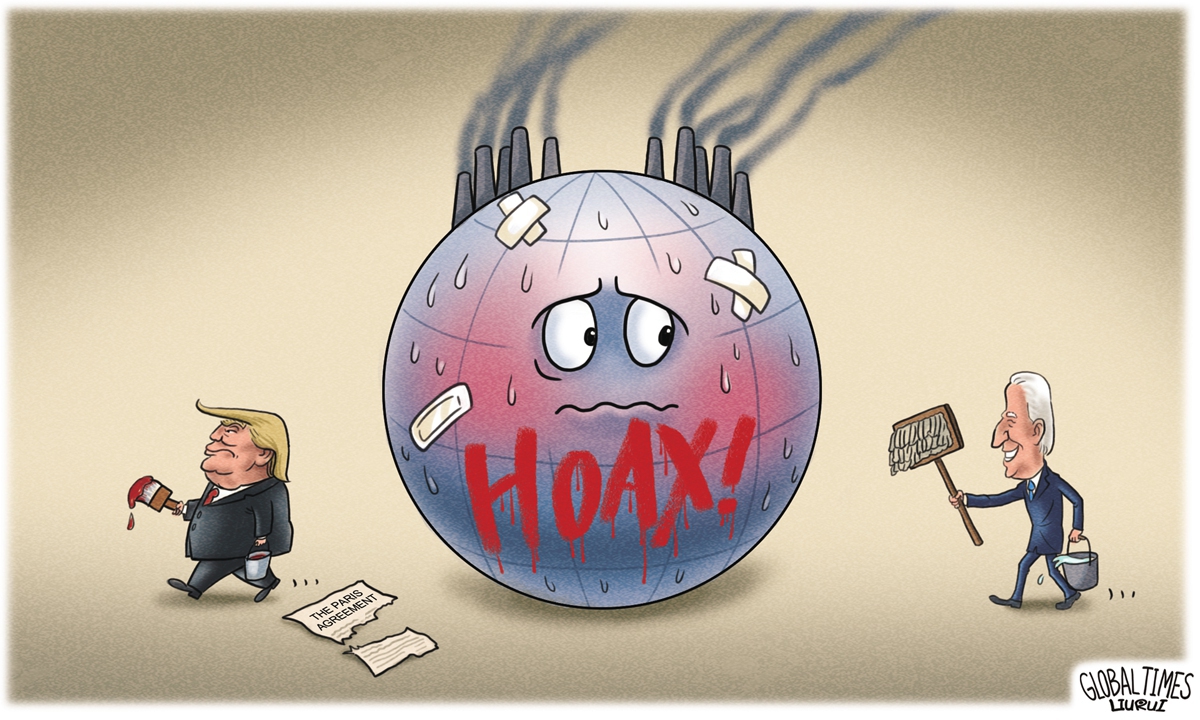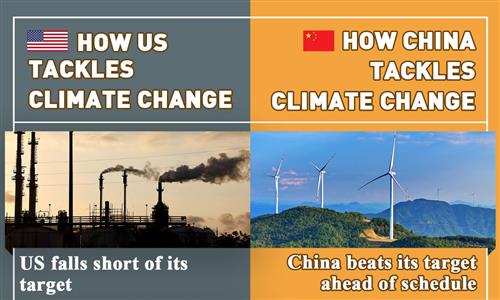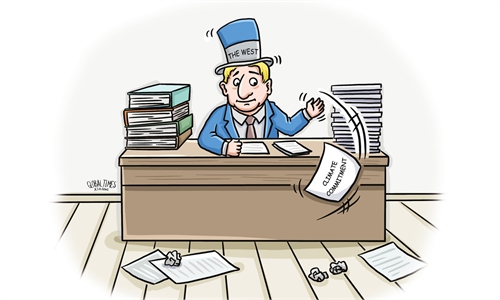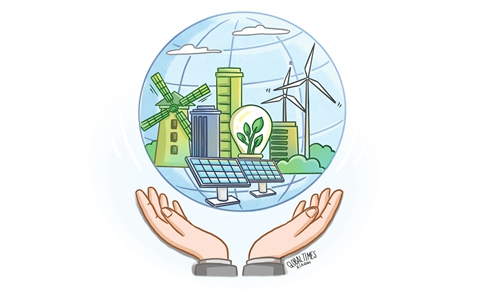
Illustration: Liu Rui/GT
It is no secret that China's rising exports of electric vehicles (EVs) to global markets have raised concerns in the US, with some in Washington even suggesting that Americans are reluctant to purchase EVs due to fears of Chinese exports of overcapacity. However, such a view overlooks the fact that American consumers actually have great potential demand for high-performance and cost-effective EVs. In light of US commitments to reduce carbon emissions and strengthen emission restrictions on fossil fuel vehicles, EVs have become the inevitable trend of future development, and thus the demand for EVs in the US is apparent.In this context, compared with Chinese EVs that are still blocked from the US market by high tariffs, the insufficient charging infrastructure that fails to keep pace with consumers' needs may be a real constraint on their willingness to buy EVs.
The US government always has ambitious plans and goals when it comes to developing its own EV industry. Yet, when politicians tout America's economic and technological prowess, they often overlook a crucial factor, that is, the low efficiency of infrastructure construction.
More than two years after the US government pledged to provide $7.5 billion to build a nationwide network of 500,000 EV charging stations by 2030, only seven have been built in four states, The Washington Post reported on Friday. Twelve additional states have been awarded contracts for construction to begin, while another 17 states haven't even submitted proposals.
With a construction speed of building seven EV charging stations in two years, how could American consumers have the confidence to buy and use electric cars?
At the current pace, the target of 500,000 charging stations by 2030 would be a long shot, and the US would be lucky if it even had several charging stations in every state by that time.
The US is far behind its goal of installing fast chargers nationwide to support the transition to EVs. Excluding Tesla's network of Superchargers, the nation is just 3.1 percent of the way to its 2030 targets for fast chargers, according to the National Renewable Energy Laboratory.
This extremely slow progress serves as but a small example of the challenges facing US infrastructure construction, which have not just cast a shadow over the development of the domestic EV industry, but also had increasing negative effects on other aspects of the economy.
The causes of the infrastructure challenges are complicated, such as funding, labor and project procedures. For instance, there are currently 65,700 charging stations in the US, Chinese media outlet guancha.cn reported, citing a report by Automotive News. The report said that at least $50 billion will be needed to meet the Biden administration's target of 500,000 charging stations by 2030, meaning that the $7.5 billion set aside under the Infrastructure Law is far from sufficient.
Compared with funding, another more crucial problem is the extremely low efficiency of the infrastructure projects, which is a big reason for the long construction times and high costs of projects.
For instance, it is said that rebuilding Baltimore's collapsed Francis Scott Key Bridge could take anywhere from 18 months to several years, while the cost could be at least $400 million, or more than twice that, AP reported on Friday.
It speaks volumes about the uncertainty and inefficiency of US infrastructure projects, which is unimaginable in China. China's infrastructure development is known for its high quality and fast speed. This is because China has the ability to manage large-scale infrastructure projects in an efficient way, thanks to its centralized planning and strong implementation.
While many may suggest the US learn from China's infrastructure experience, due to differences in the systems and national conditions of the two countries, it is hard for the US to simply follow the way China implements infrastructure projects.
The US needs to find its own way to improve the efficiency of infrastructure construction. If not, it will probably face a long time to develop its EV industry, let alone compete with global rivals.
For a long time, the US has pointed a finger at China over the latter's efforts on climate issues, but the slow progress in building charging stations in the US highlights the struggles the US encounters in meeting its own environmental standards. The US target of reducing carbon emissions by 50 percent by 2030 is essential in avoiding the catastrophic effects of global warming, and the Biden administration's backsliding on the climate crisis will endanger the overall accomplishment of climate change goals.



